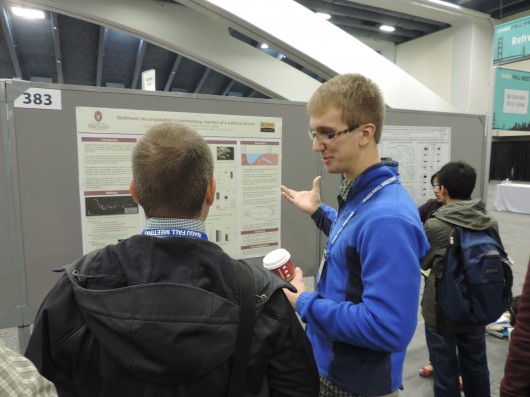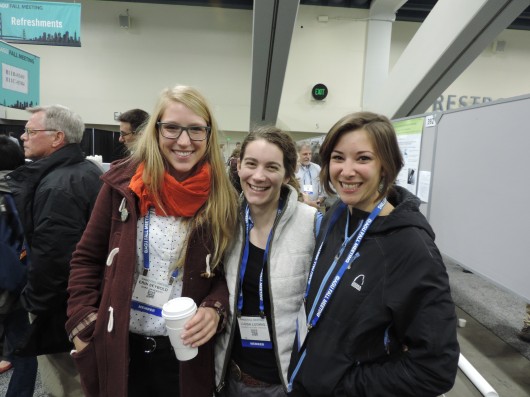
Polaris group dinner, AGU 2013
This has been a busy week for the Polaris Project family. We have hit the science community with a tidal wave of data, ideas and conversation, aimed at continuing our quest to tackle the big questions in Arctic System Science. No longer at the Northeast Science Station, we are instead making our mark on the annual meeting of the American Geophysical Union in San Francisco.
This marks the 6th consecutive year we have made our presence felt here, and this time around we have a record number of participants from our team. It is critical to our mission that we communicate the results of our work broadly and effectively and this is one very important venue for us. We also use this as an opportunity to introduce new Polaris scientists to what for some is their first international conference, to reconnect with old friends and colleagues, and to catch up with Polaris alumni who have moved on to graduate school. It also brings into focus the magnitude of what we have achieved as a team and we take great pride in what has become a large, dynamic, and diverse group of Arctic scientists.
Here are some numbers:
28 members of the Polaris team are here presenting the results of their research, including undergraduates, graduate students, post-doctoral scientists, and PIs.
16 are students that participated in Polaris field research as undergraduates, at least one alumnus from each of the 6 years of the project.
6 former students are here that are currently in PhD programs.
Remarkably, there are 13 posters and talks here that include data collected during the 2013 field season.

Seth Spawn discusses his research with a fellow scientist

Erin Seybold (2009-10 Polaris Alum; Duke University), Ludda Ludwig (2011-13; University of Alaska Fairbanks), and Laurel Lynch (2011; Colorado State University).
